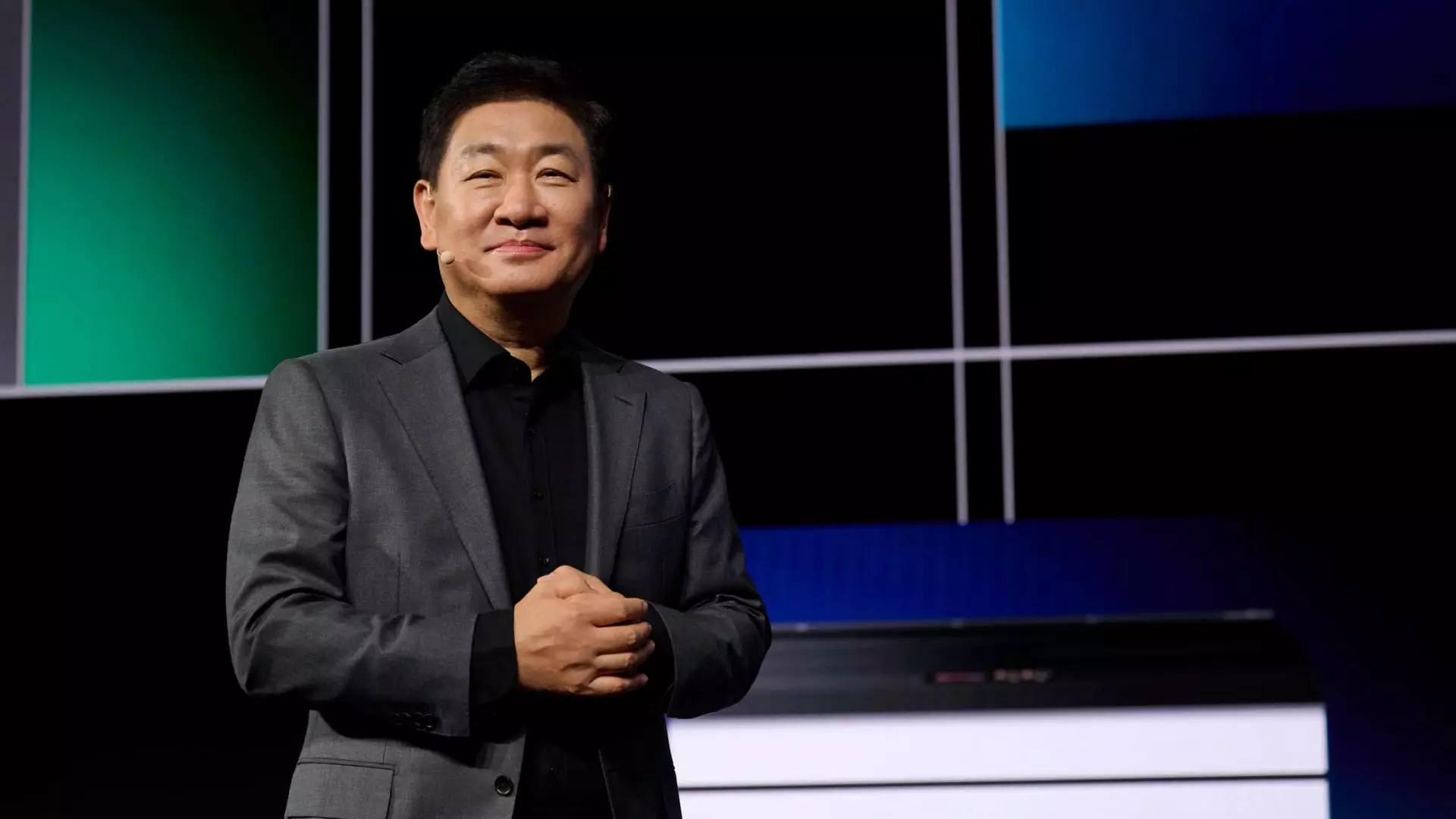Samsung Electronics, recognized globally as a leading player in the consumer electronics market, is strategically enhancing its focus on on-device artificial intelligence (AI) in a bid to surpass market growth expectations. With anticipated growth of only 3% in the global consumer electronics segment by 2025, CEO Jong-Hee Han has outlined an ambitious target for Samsung’s mobile device sector, projecting an impressive 4% to 5% increase in this fiscal year. However, Samsung’s oversight in fully leveraging its market advantages, particularly when it comes to competitive pricing against aggressive Chinese manufacturers like Huawei and Xiaomi, poses significant challenges.
While Samsung continues to expand its AI capacities—including the integration of AI chips into everyday household appliances such as refrigerators and washing machines—the company also faces relentless competition. Unlike its Chinese counterparts that utilize lower pricing strategies to attract consumers, Samsung is shifting its focus toward enhancing product quality, security, and convenience. This strategic pivot raises questions about whether Samsung can successfully alter consumer perceptions and delineate its market space, especially among price-sensitive demographics.
The current trajectory of Samsung’s AI initiatives showcases the company’s commitment to revolutionizing user experiences, particularly through its flagship Galaxy S24 smartphone series. With features like real-time translation of phone calls, the company is emphasizing technological advancement. However, the comprehensive AI integration into home appliances stands as a pivotal differentiator that could either enhance or hinder Samsung’s market dominance. As AI becomes increasingly ingrained in consumer preferences, Samsung must ensure that its innovations resonate well with consumer expectations.
Moreover, as competitors continue to scale their AI capabilities, the burden of maintaining a competitive edge rests heavily on Samsung’s shoulders. The effectiveness of Samsung’s “value-up” plan—aimed at increasing shareholder returns—will largely depend on the successful execution of these AI initiatives, despite the apparent financial decline it has faced in recent years. Transitioning focus toward AI could not only reenergize its brand appeal but also provide a firmer foothold against rivals that capitalize on cost efficiencies.
Interestingly, Samsung’s financial landscape poses both opportunities and challenges. Recent forecasts indicative of an expected operating profit of 8.2 trillion won ($5.6 billion) for the December quarter reflects an improvement compared to the previous year, albeit with a significant decline from earlier results. This fluctuating profit margin adds complexity to Samsung’s attempt to maintain investor confidence amid a rapidly changing semiconductor market.
The competitive edge previously held by Samsung in the memory chip sector has weakened, particularly with its rival, SK Hynix, taking charge in the supply of high-bandwidth memory (HBM) chips crucial for AI technologies. The stock market performance of Samsung has also been underwhelming, with shares plummeting 32% last year. Raising further scrutiny, Samsung’s perceived value has never been lower according to CEO Han, prompting the introduction of a substantial share buyback plan aimed at stabilizing stock prices.
Addressing the current market challenges underscores the necessity for Samsung to adopt agile strategies in terms of innovation and financial modeling. Analysts have expressed hope that Samsung can effectively bridge the gap in HBM chip supply, yet caution remains due to potential delays and faltering PC sales. Furthermore, the company’s recent restructuring, including the appointment of co-CEO Jun Young-hyun, signals a critical shift in leadership intended to rekindle growth and innovation.
Such organizational changes are crucial, but they also carry the risk of creating uncertainty among investors and consumers alike. Hence, moving forward, Samsung must prioritize clear communication regarding its strategic direction, particularly in relation to emerging technologies and market positioning.
As Samsung Electronics navigates a complex landscape defined by both fierce competition and technological advancement, its success will hinge on the ability to effectively implement its AI strategies and adapt to market shifts. While the prospects of enhanced features in consumer electronics look promising, achieving sustained growth will require an unwavering commitment to innovation, a keen understanding of consumer needs, and proactive measures to rebuild investor confidence. Through engaging consumers with improved connectivity and security, Samsung may yet secure its position at the forefront of the evolving consumer electronics market.

